The desert is extremely arid and one of the harshest living environments on the planet. It is estimated that about 33% of the Earth’s surface is desert, and while most people think of deserts as barren wastelands, you can find many species of wildlife and plants that have adapted to survive in these dry regions.
1. Bighorn Sheep
Native to North America, the bighorn sheep is a species that inhabits rocky mountainous areas. Bighorn sheep can be found in the Mojave, Sonoran, Chihuahuan, and Great Basin deserts, which are the four major desert landscapes in North America.
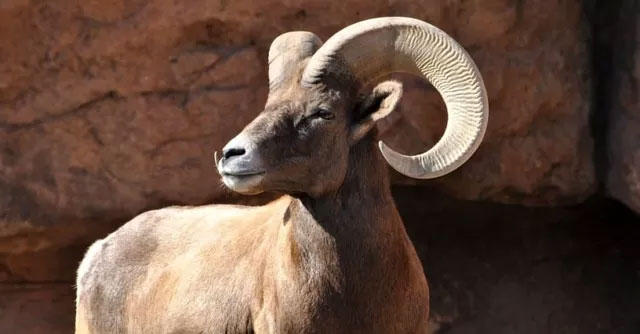
Scientifically named Ovis canadensis nelsoni, they are animals that have evolved to adapt and survive in extreme temperature conditions, with bodies that can withstand the drastic temperature changes between day and night in the desert. They can also survive with minimal water and can maximize water absorption through their food. Bighorn sheep can lose up to 30% of their body water, and drinking water helps them quickly recover their health.
These animals are excellent climbers, and their hooves provide them with great traction and balance. They can stand on ledges as small as 2 inches, which is very useful for escaping predators such as coyotes, wolves, and mountain lions.
2. Gobi Bear
The Gobi bear (Ursus arctos gobiensis) is the only bear species capable of enduring the extreme heat of the desert. The Gobi bear is a subspecies of the brown bear and originates from western Mongolia in the Gobi Desert. Listed as critically endangered, the Gobi bear is one of the rarest bear species on the planet, with an estimated 51 individuals remaining in the wild.
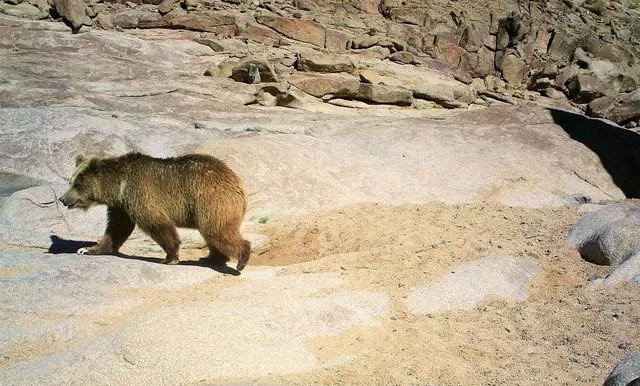
The Gobi bear is a small subspecies of brown bear, adapted to live in mountainous and flat desert habitats. They are omnivorous, feeding on berries, wild onions, rodents, insects, and the vegetation they find. Gobi bears primarily consume plant matter, with only 1% of their diet consisting of meat. Their bodies are capable of efficiently storing fat and water.
Climate change in the Gobi Desert and environmental destruction due to mineral extraction are the main causes of the Gobi bear’s declining population. Currently, there are no Gobi bear populations existing in captivity, and only a few remain in the wild.
3. Ostrich
The ostrich is the largest bird in the world and is flightless due to its size. The ostrich has extremely strong legs and can run up to 43 miles (about 70 km) per hour. There are two existing ostrich species: the common ostrich (Struthio camelus) and the Somali ostrich (Struthio molybdophanes). The common ostrich is the larger of the two and is more frequently found in desert habitats. The common ostrich originates from Africa and lives in the savannas and deserts of the continent.
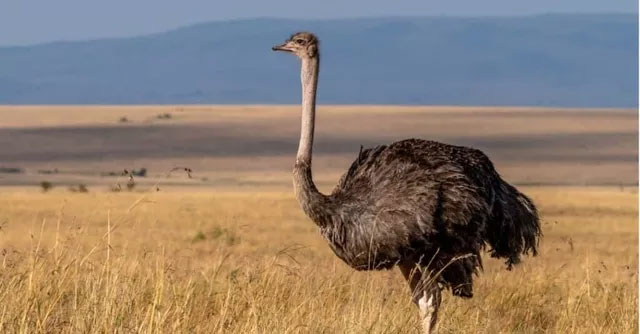
Male ostriches are generally larger than females. The powerful legs of these large birds allow them to stride up to 3 to 5 meters in a single step. They have only two toes, which helps them achieve greater speeds. Although ostriches have large wings, they cannot fly and use them for balance when moving at high speeds.
Ostriches are omnivorous, but most of their diet consists of plant matter. They eat roots, seeds, leaves, and fruits, as well as lizards, insects, and snakes. Despite their relatively simple diet, these animals can kill larger animals. Their strong legs with sharp claws can inflict injuries and fatal wounds. These large birds live in small groups of about 10 members and can sometimes be found in flocks of up to 100.
4. Kalahari Lion
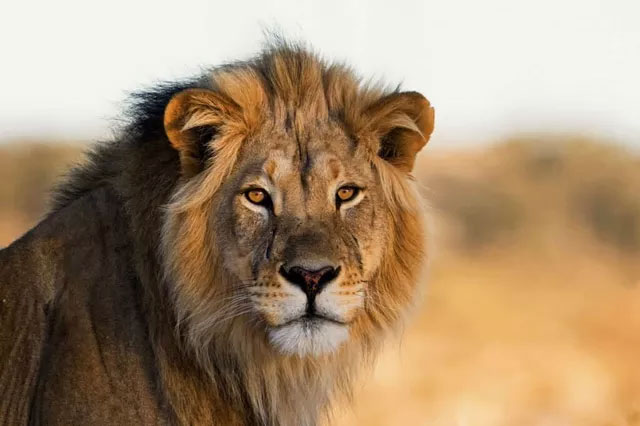
The lion is one of the largest cat species in the world and is highly adaptable. Originating from Africa, lions inhabit savannas, grasslands, scrublands, open plains, and sometimes even forests. In Africa, you can find various lion subspecies living in the Sahara, Namib, and Kalahari deserts. Although lions are not always found in desert areas, they are among the largest animals that can live there.
Desert lions have slightly longer legs than other subspecies, which helps them cover longer distances. Because deserts lack water, desert lions can also go long periods without drinking and can absorb moisture from the blood in their prey.
5. Wild Donkey
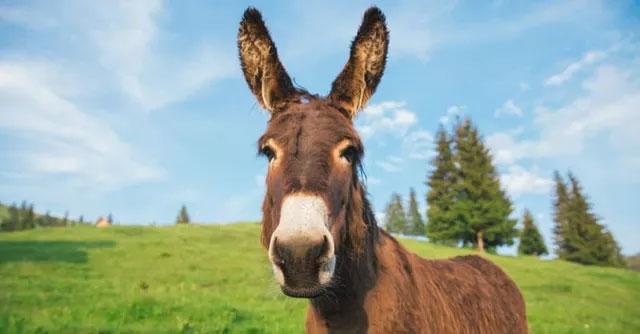
Wild donkeys are a highly resilient species that can survive in the extremely arid climate of the desert. They inhabit various deserts across North America but originally come from North Africa. Not only are donkeys among the largest animals in the desert, but they are also one of the best-adapted species in this environment. They have large ears that help dissipate heat, and their gray fur reflects the harsh sunlight.
Donkeys can also go for long periods without water and can lose 30% of their body water without serious consequences. It is estimated that they can travel for about a week without water. Wild donkeys vary greatly in size, with the largest reaching up to 260 kg. Their strength allows them to carry loads of up to 60 kg on their backs.
6. Camel
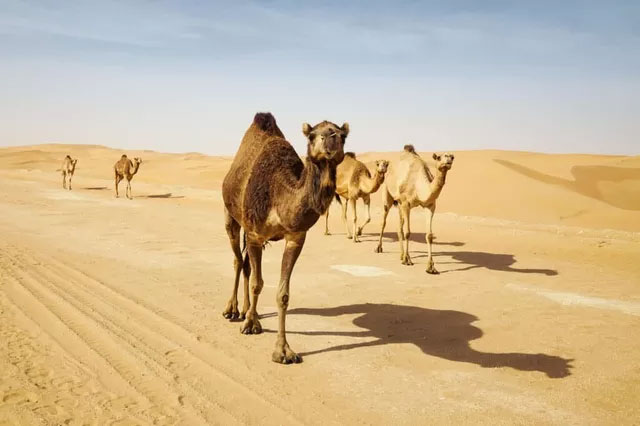
Camels are one of the first animals that come to mind when thinking of deserts, and they are also among the largest animals living in these arid environments. There are two species of camels: the Bactrian camel (Camelus bactrianus) and the Dromedary camel (Camelus dromedarius). The Dromedary camel is the most common, accounting for about 90% of the camels on Earth. The Bactrian camel, while rarer, is heavier and lives in the Gobi Desert.
Camels were domesticated as they adapted to live in harsh desert environments and can travel long distances without water. Most people think that a camel’s hump is used to store water, but in fact, it stores fat. Storing fat helps them survive when food is scarce, which is common in deserts. Camels store water in their blood and can go without drinking for up to 15 days.
7. Desert Rhino
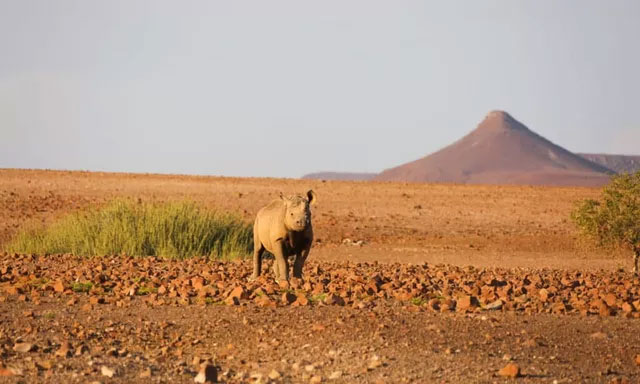
The desert rhino is a subspecies of the black rhino adapted to live in desert environments. This subspecies has slightly different adaptations and lifestyle traits that help them survive in the desert. Desert rhinos can go for 2 to 3 days without water and are typically nocturnal to avoid the heat of the sun. They are gray and dark in color, reflecting light.
Desert rhinos are extremely mobile and can survive in a variety of habitats. The global decline in rhino populations is due to poaching and the illegal hunting of their horns. The black rhino, along with the Javan and Sumatran rhinos, is considered critically endangered. Desert rhinos are very large and spend most of their time searching for food and water.
8. Giraffe
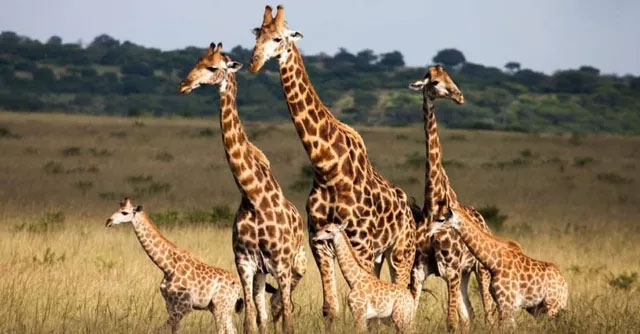
The giraffe is the tallest land animal currently existing on our planet and is also one of the heaviest animals living in the desert. Giraffes originate from Africa, and the desert is just one of the environments they inhabit. Open woodlands, grasslands, and savannas are other habitats where giraffes live, with their range extending across the semi-arid regions of the Sahara in Africa.
There are four existing giraffe species: the Masai giraffe, the northern giraffe, the reticulated giraffe, and the southern giraffe. The Masai giraffe is the largest among them and also inhabits semi-desert areas.
9. African Bush Elephant
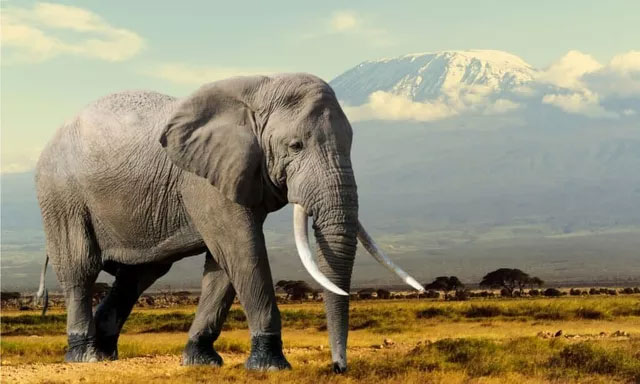
Among all the animals living in deserts around the world, the African bush elephant (Loxodonta africana) is the largest. They are also the largest land animals that exist today. African bush elephants have the longest gestation period of any animal, with females being pregnant for 22 months.




















































